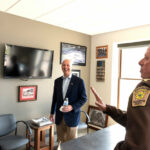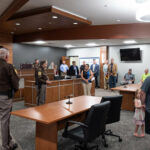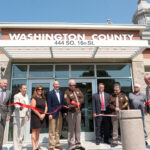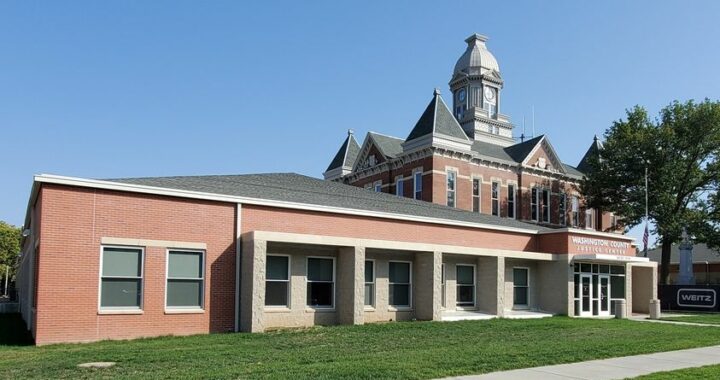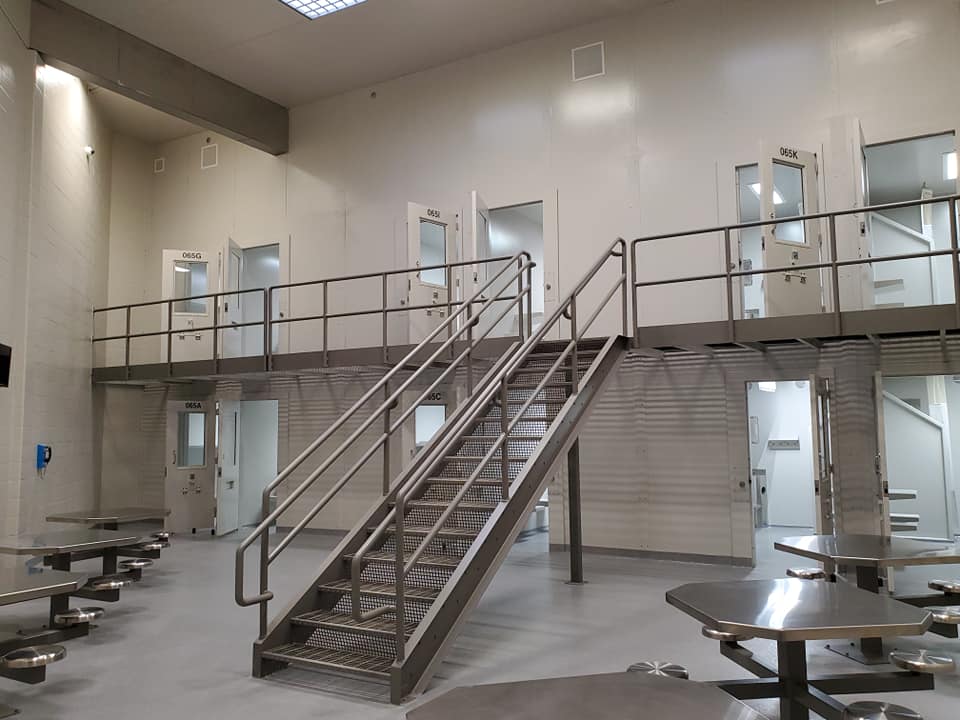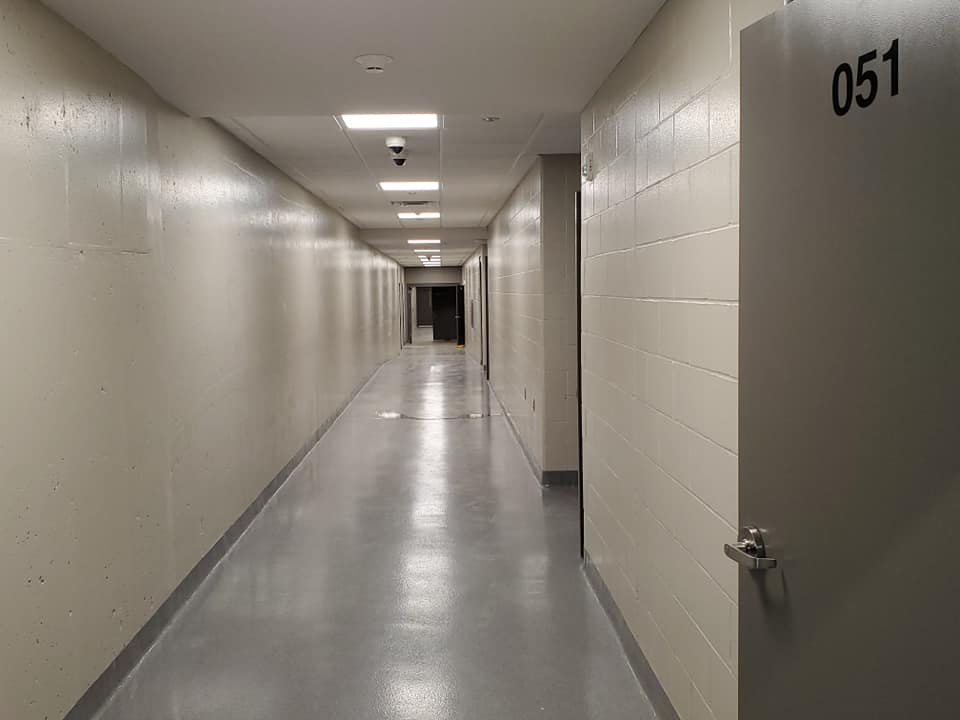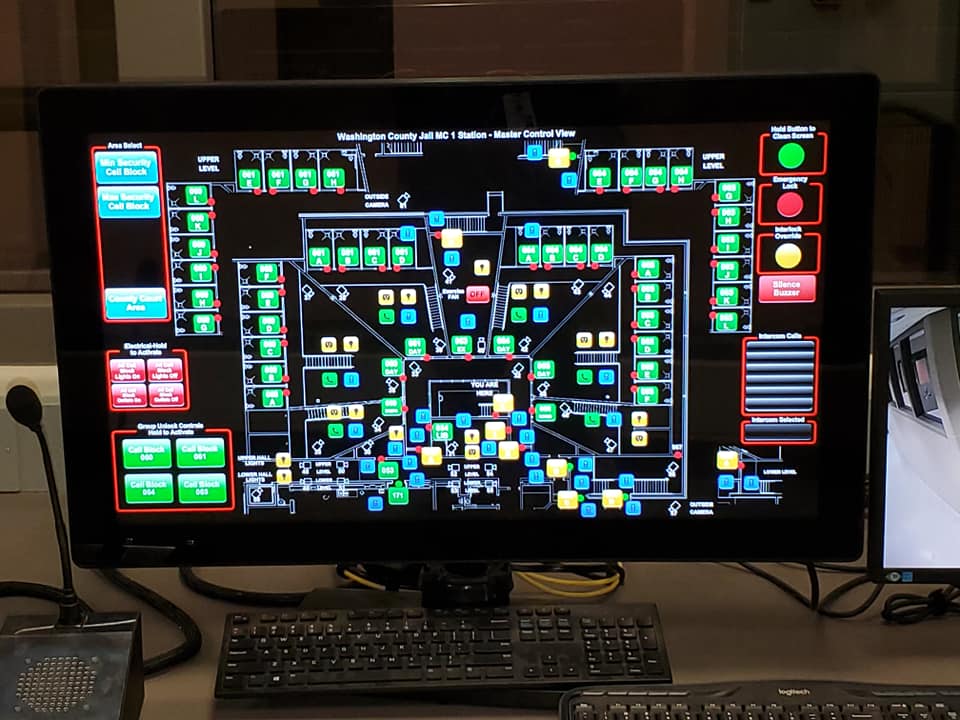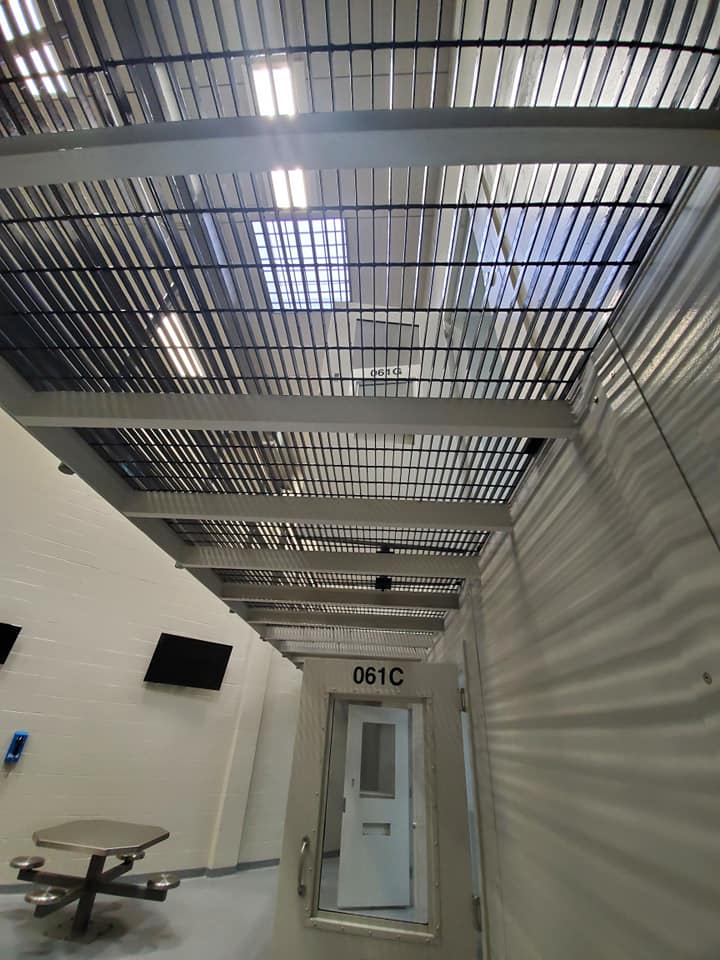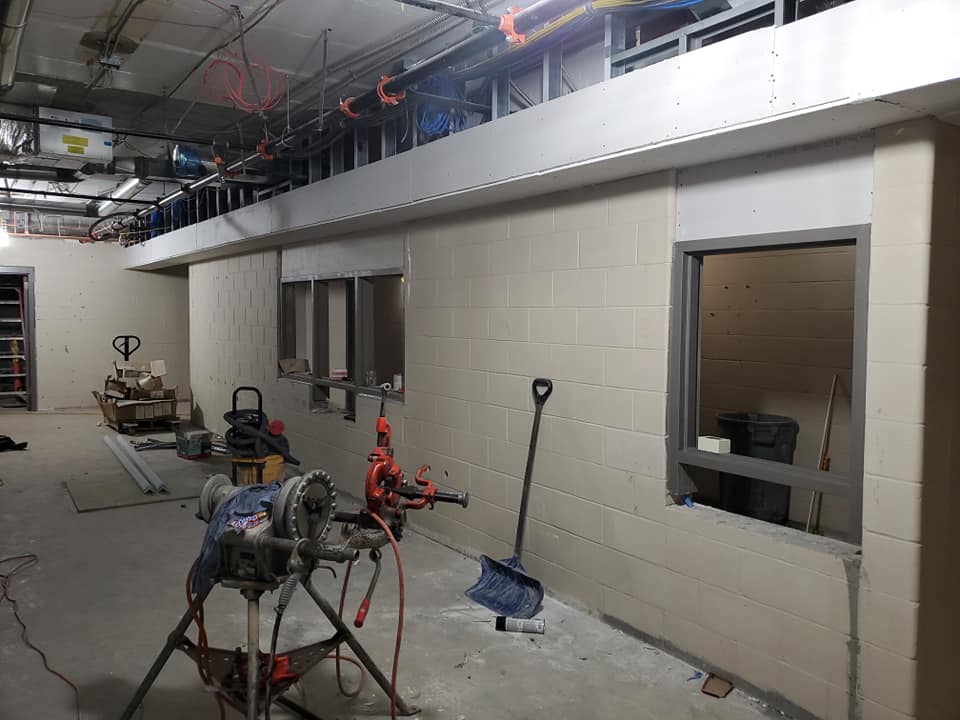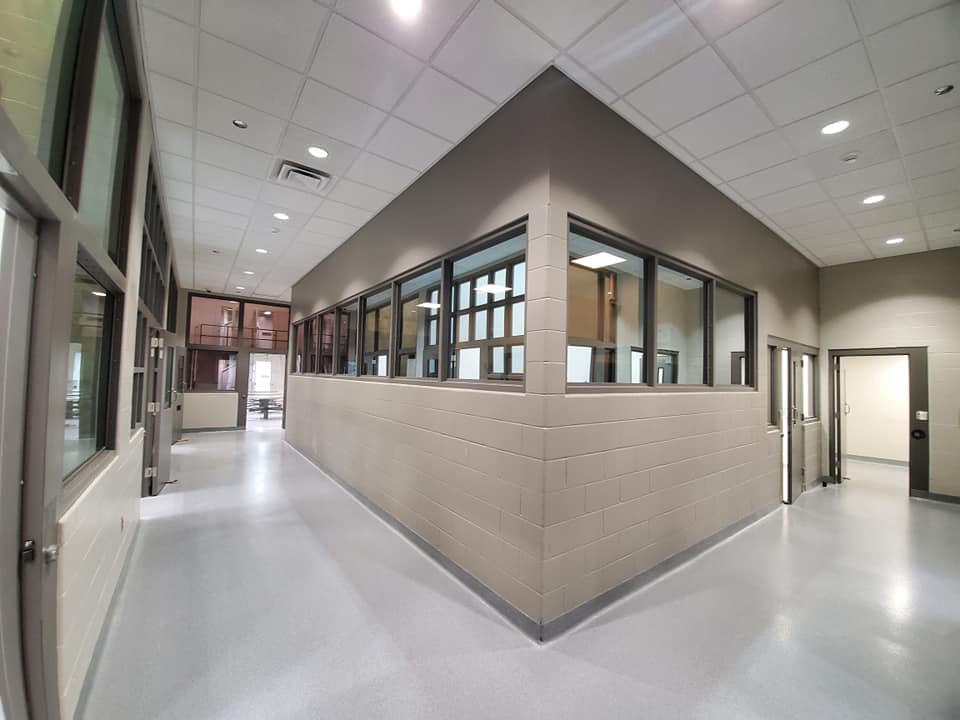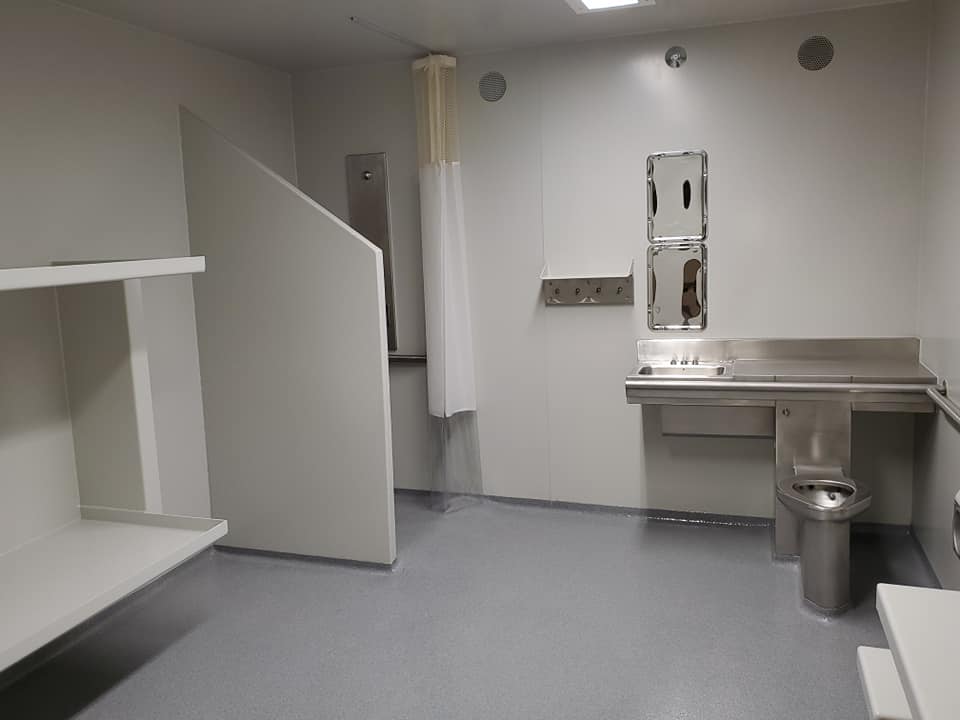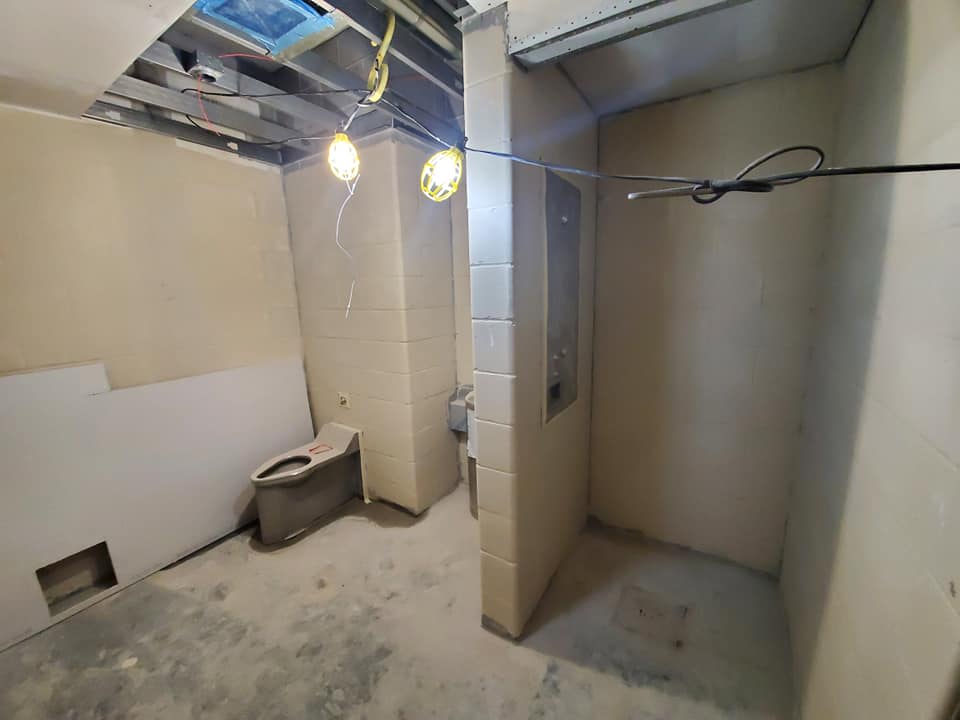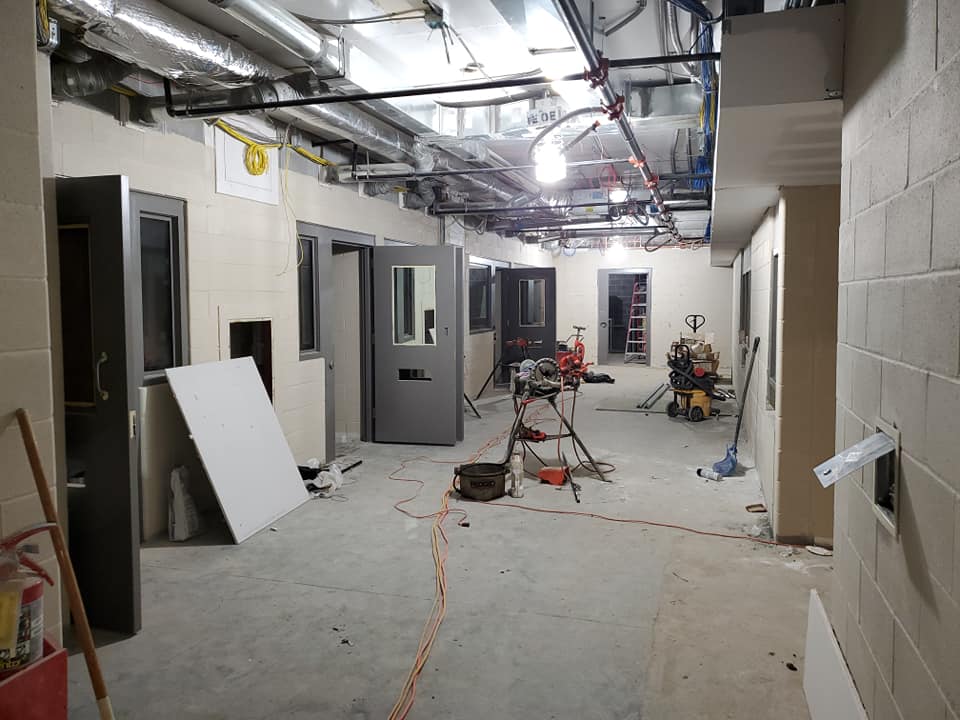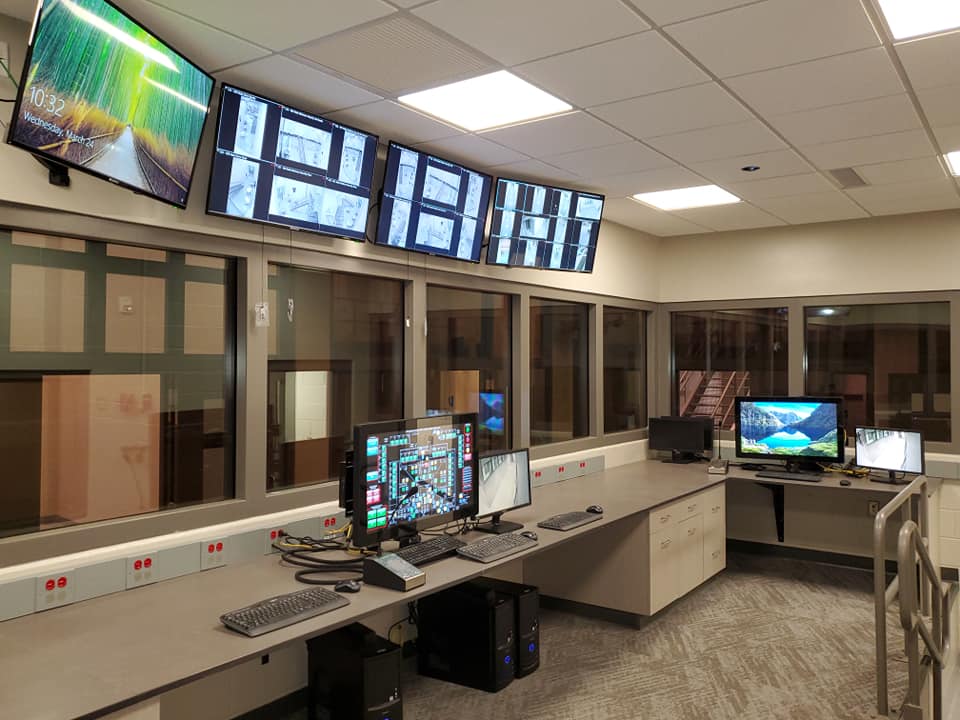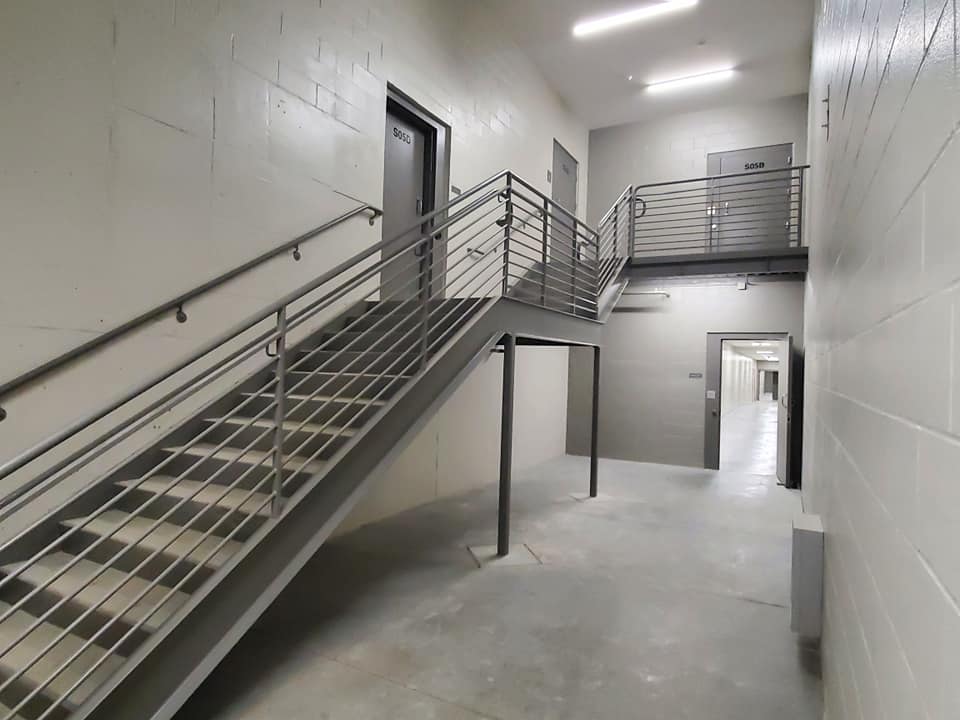The new Washington County Law Enforcement and Criminal Justice Center is one step closer to completion.
The sheriff’s office will be closed Sept. 3 and 4 for move-in day. The official opening of the entire facility will be in February.
Inside the new sheriff’s office and jail includes several office spaces not currently offered inside the old building, as well as several other additions that will ensure safety and security.
On the main floor, every door is key card accessible, and inside the jail, everything is electronically controlled.
Near the main entrance of the building is a video visitation room, where people can use the video screens or phone to contact inmates remotely.
The remote visitations, Capt. Rob Bellamy said, can also reach outside the facility, so long as visitors have a laptop or computer with camera and internet access. On-site, the visits are free through Combined Public Communications, but elsewhere there will be a fee.
“The inmates never leave their housing units,” Bellamy said. “Every visit has to be scheduled — up to seven days or 24 hours out. All the equipment and maintenance involved are all provided by CPC at no cost for the county. It’s also revenue-generated, so we make some money off of it.”
Near the entrance are several office spaces for all employees, which Sheriff Mike Robinson said is one of the most exciting parts because many deputies share small office spaces. These rooms don’t have public access.
Also included are three interview rooms for deputies questioning people and making statements. These rooms have both audio and video recordings.
Robinson said some of his favorite areas are the evidence intake and evidence rooms.
These rooms are connected by a storage unit where in the intake room, deputies will bag and put evidence in a locker that can’t be accessed until they go to the evidence room on the opposite wall.
“This is one of my favorite rooms compared to what we have,” Robinson said. “The old evidence room is in the basement, and the walls would leak water and flood periodically, and we’ve lost evidence because of that.”
Additional rooms on the top floor include a finger-printing room, which has an automated finger identification system; the front desk where visitors can go to for inquiries such as gun permits; a conference room for meetings, budget meetings and multimedia usage; a weapon storage with safes; locker rooms with showers and assigned lockers; and a training room that can potentially be shared with other agencies in the future.
The courtroom is another huge improvement to the current space, Bellamy said.
The new room has separate areas for the stenographer and witnesses, more seating for the public, a separate interview room and a safer access area for the judge to enter the bench.
Along with the bigger area, Bellamy said he’s happy that the inmates now enter the courtroom without ever intermingling with the public.
“It’s a grand room, I believe,” Bellamy said. “Just the separation of the public and the prosecutors and defense attorney, in correlation to the judge — a lot of thought went into this room. It’s going to be much safer and aesthetically pleasing.”
Also included with the courtroom is a jury room, judge’s chambers and a break room for the court staff.
Down at the new jail, there are 18 spaces for maximum security inmates, or inmates with medical conditions or behavioral issues. Inside the entire jail, 120 inmates can be held.
“We’ve been operating in less-than-ideal conditions for a long, long time. This is going to solve a lot of our problems,” Bellamy said.
The jail is completely electronically-accessible, controlled by control room staff.
The front door for the jail has an intercom system and a pedestrian sally port, to provide an extra layer of security in case of emergency situations.
Two of the maximum security rooms are handicap medical segregation rooms, and they have negative air in case an inmate has a contagious disease — this way, the air isn’t shared with the rest of the jail.
“This is beneficial because we’ve had a few people over the years with tuberculosis and things like that,” Bellamy said.
Another unique aspect is inmates can’t see outside their cells, but the control room staff and officers can see inside.
Included in the cells are bathrooms with a shower, toilet and sink; a bed; television; and video visitation screens.
The cells are also wheelchair accessible with wide doors, which was an issue in the past. The doors have a nook for prisoners to receive their food or to be handcuffed in case of an emergency.
Inside the control room, in the middle of the maximum security area, the staff is able to see inside all rooms and has access to all cameras around the facility.
“It means safety and security for the staff — that’s a big thing,” Robinson said, noting that the control room is his favorite area. “If someone even manages to get out, the doors all lock and they can’t get to anyone. They hit one button and every door is locked.”
The justice center will have an official open house in February when the entire facility is complete.







